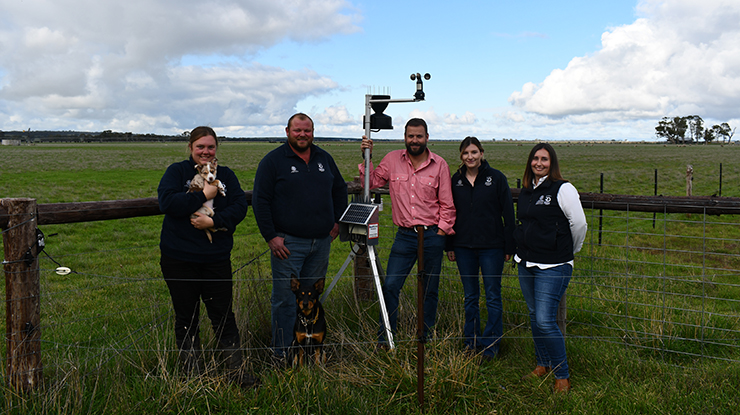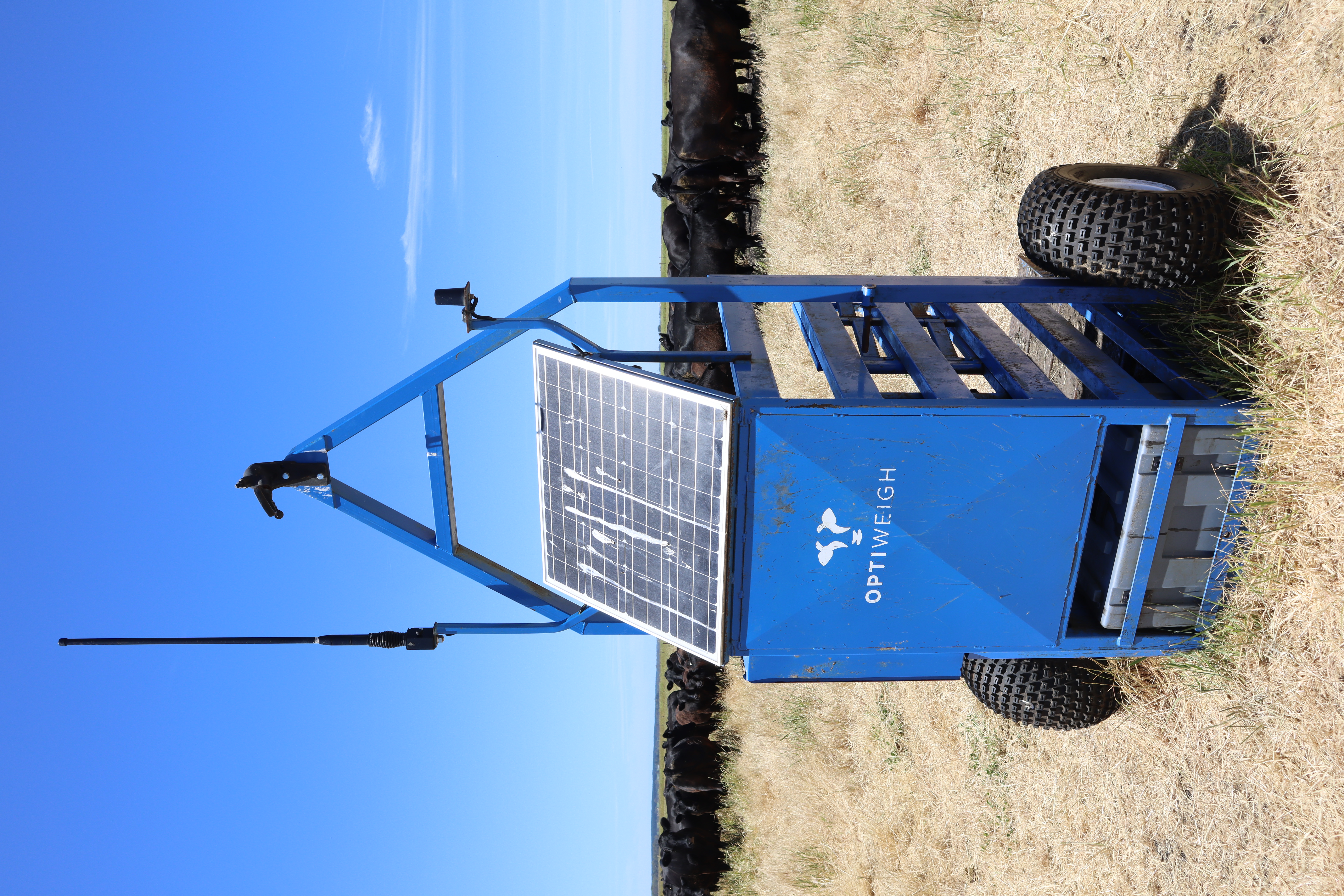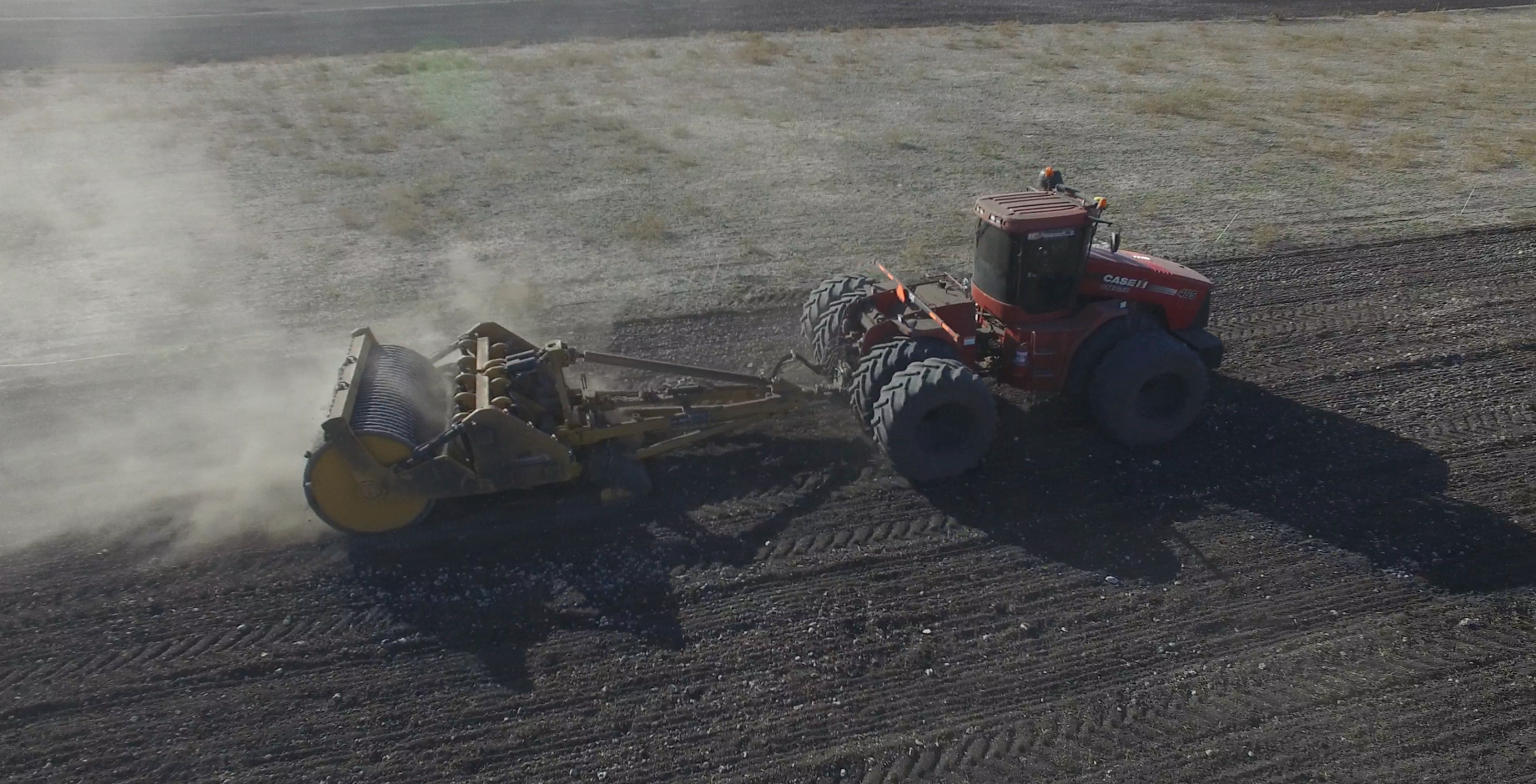 Bree Heffernan, Luke Brooksby, Andy Phelan, Ashleigh Horsnell and Robyn Terry at Struan with the property’s BushLinx weather station. Credit: PIRSA
Bree Heffernan, Luke Brooksby, Andy Phelan, Ashleigh Horsnell and Robyn Terry at Struan with the property’s BushLinx weather station. Credit: PIRSA
Opening the gate to ag-tech productivity gains
The Struan and Kybybolite Best Practice Demonstration Farm (BPDF) is putting management practices and ag-tech through their paces to improve on-farm productivity and profitability, with the aim of increasing producer uptake of innovative farming practices and new technologies.
The BPDF – with two farms near Naracoorte, SA – is a partnership between Thomas Elder Institute (Elders’ research, development and extension facility) and the SA Government’s Department of Primary Industries and Regions (PIRSA) Red Meat and Wool Growth Program, which is supported by MLA.
As well as showcasing the value of new ag-tech products and practices – ranging from water monitoring to virtual fencing – the farms act as a vehicle for research on pastures, crop agronomy, grazing management, genetics and meat quality.
Here, Robyn Terry, Senior AgTech Extension, PIRSA, opens the gate to how BPDF uses ag-tech to demonstrate how innovations can inform key management decisions.
Risk management with water monitoring
A typical day starts with checking Struan and Kybybolite’s many water monitoring devices, streamlined by Pairtree – a universal dashboard that centralises related but disconnected datasets from across the farm operation and supply chain.
It’s displayed in the farm lunchroom, removing the need to manually gather large datasets or manage multiple applications.
Several water monitoring devices, which measure the height of header tanks, troughs and water inlet and outlet flow, reduce the need to check on stock water by around 50%.
These include technologies from Alpha Group Consulting, AKA Primary Solutions, DIT AgTech, Farmbot, Farmo and Goanna Ag.
“This technology saved 790 at-risk, pregnant ewes when the header tank at Kybybolite, a 74km return trip from the farm office at Struan, completely drained following an electrical fault,” Robyn said.
“The excessive rate of fall and low water level triggered an immediate alert to staff who weren’t due to check on the ewes for some days.”
Similarly, at Struan, despite a tank monitor showing it was 70% full, an alert sent by the empty trough monitor alerted staff to a broken ballcock and pipe clogged with water beetles.
Water flow monitoring can alert staff to broken troughs, pipes or water leaks if water flow is high overnight when stock aren’t drinking. Relying only on tank monitor measurements of water height may not prevent leaks being found.
ROI
| An analysis of the return on investment (ROI) of all water monitoring devices, including ongoing subscription costs, over three years, estimated a ROI of on average 625%, with a 50% reduction in time spent checking tanks and troughs.1 |

Portable livestock weighing technology, Optiweigh. Credit: PIRSA
Monitoring productivity, remotely
Staff can monitor the live weight of cattle at any given time through the portable, in-paddock weighing system, Optiweigh, which was developed with MLA support.
Optiweigh removes the risk of unexpected weight loss in cattle, especially when the pasture base is low. It also reduces labour, optimises breeding by ensuring heifers reach a suitable weight prior to joining, and reduces weight loss caused by needing to move cattle to yards for weighing.
“The Optiweigh’s electronic identification (eID) panel reader helps us track individual live weights and determine our tail-end performers, so we can strategically increase their weight and reduce variation for market,” Robyn said.
“Non-performers can be removed from the herd and other management strategies can be applied to increase performance.”
For example, Optiweigh detected a drop in the average daily gain of steers – over six days they went from average gain of 1 –2kg/day to losing between 2–4.5kg/day. This weight loss was rectified by feeding out more silage.
ROI
| A ROI analysis of using Optiweigh with two yard weights when monitoring a mob of 40 heifers, showed an estimated ROI of 13% in the first year.2 |
Integration improves irrigation efficiency
BPDF staff integrate data from a range of technologies to inform reliable decisions around irrigation scheduling.
They use Swan Systems, a technology which incorporates data from soil moisture probes and on-farm weather stations – including integrated irrigation (BushLinx), Goanna Ag, AKA Primary Solutions and Alpha Group Consulting (Wildeye) – to determine whether to irrigate.
Staff can remotely start the flood pump, by first priming the pump from a phone utilising technology from Acroflex.
“This enhances staff safety, saves time and reduces the need to drive out to the pump shed, with the likelihood of being bogged, just to turn the flood on and off,” Robyn said.
Uniform livestock supplementation
The farms are maximising the health and feed utilisation benefits of mineral supplementation using a new dosing technology, uDOSE, by DIT AgTech.
“Staff are able to remotely monitor and control uDOSE to proportionally dose concentrated liquid supplements via a water meter into livestock’s water supply,” Robyn said.
It provides a measurable and controllable alternative to dry loose licks and blocks, overcoming the risk of inconsistent intake due to feeding frequency, animal hierarchy and product palatability.
ROI
| In a six-month analysis of uDOSE to supply mineral supplement to 1,000 ewes, an estimated 131% ROI was achieved.3 |

Paddock renovator, Reefinator. Credit: PIRSA
Maximising land use
Throughout the day, farm staff can monitor pasture growth, soil moisture profiles and live weight gain in cattle as part of a trial investigating pasture renovation.
An area of thick limestone rock bed with low root penetration has undergone two methods of renovation, using a Reefinator and a bulldozer, to assess the results and costs.
The Reefinator trial (April 2021) pulled up and crushed rock to a maximum depth of 20–40cm at a cost of $800/ha with three passes.
The bulldozer trial (April 2022) extracted and crushed rock to a maximum depth of 1m at a cost of $1,200/ha on the first pass, with two more passes to roll and crush large, extracted rocks.
Annual ryegrass was sown over both years to clean up the paddock with the intention of sowing perennial grass next year.
Last year, Robyn said they observed extra soil moisture and the ability for moisture to penetrate deeper than where the Reefinator hadn’t been used. Although they didn’t see the anticipated increase in dry matter per hectare (DM/ha), they will reassess DM/ha this year as there is anecdotal evidence that the second year post-Reefinator shows larger production benefits.
Trial results will help producers turn unproductive, high-cost land into workable soil.
Simplifying biosecurity and safety
Another simple but important technology being used at BPDF is the app, Onside.
It’s used for visitor check-ins, on-site messaging, enhanced biosecurity and improved staff safety. QR code check-ins around the property boundary remove the need for contractors to visit the office.
“Staff can send notifications during emergencies, track visitors to control the spread of pests and disease, and receive notifications if staff have not checked in,” Robyn said.
“It even allows property mapping of infrastructure and uses GPS pin locations to notify staff of risks and hazards.”
Lessons learnt
|



